Data Brief 2021-029 | October 18, 2021 | Written and compiled by Leila Gonzales and Christopher Keane, AGI
Download Data Brief
COVID-19 Impacts on Geoscience Business Operations, January – August 2021
Between January and August 2021, over one-third of employers reported
expectations of better financial performance relative to 2020, and
between 37% and 54% of employers reported similar expectations of
financial performance to 2020. By August 2021, nearly one-quarter of
employers reported expectations of better financial performance relative
to pre-pandemic times, and nearly one-third reported lower expectations
of performance.
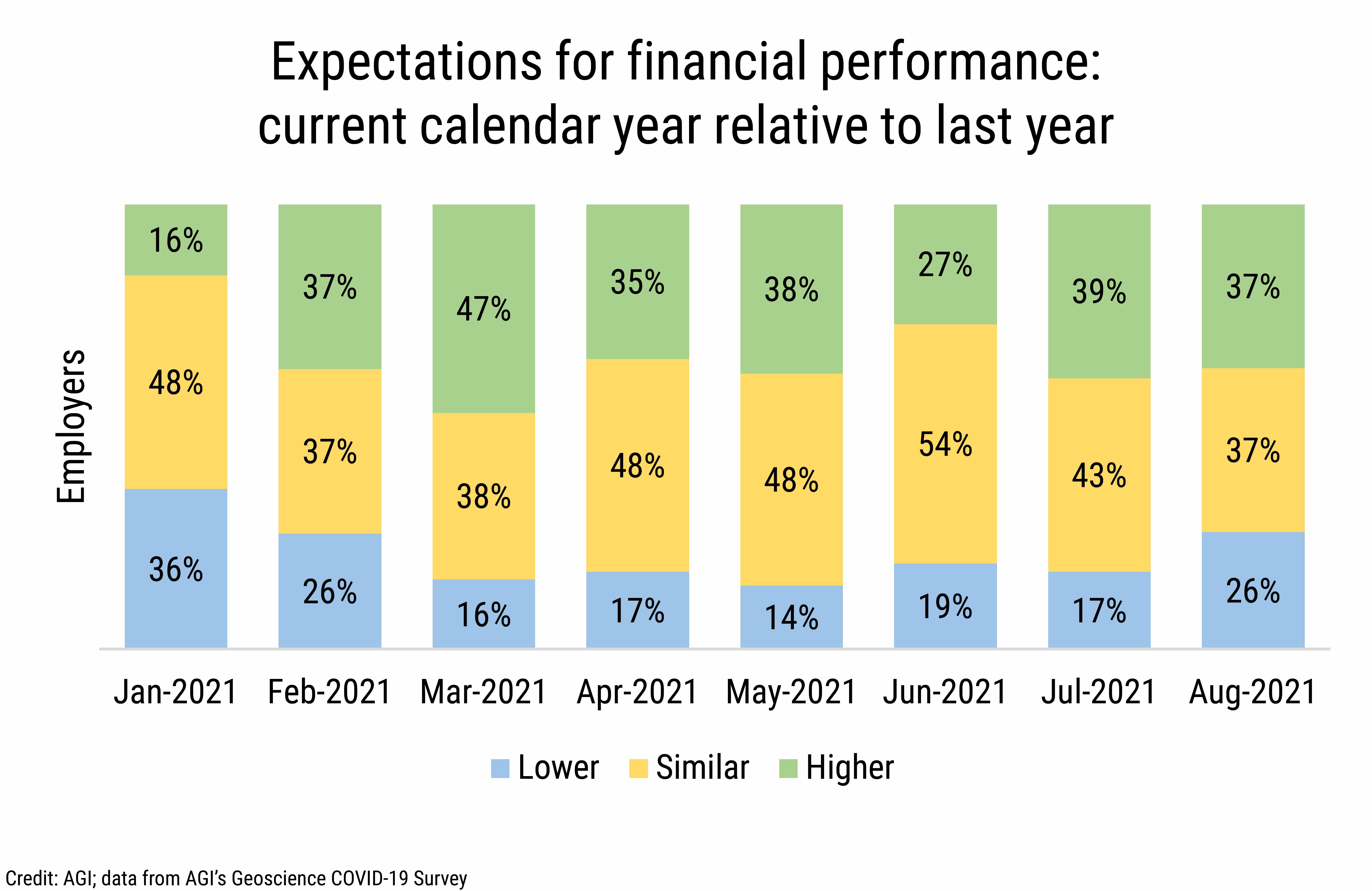
DB_2021-029 chart 01: Expectations for financial performance: current calendar year relative to last year (Credit: AGI; data from AGI's Geoscience COVID-19 Survey)
AGI
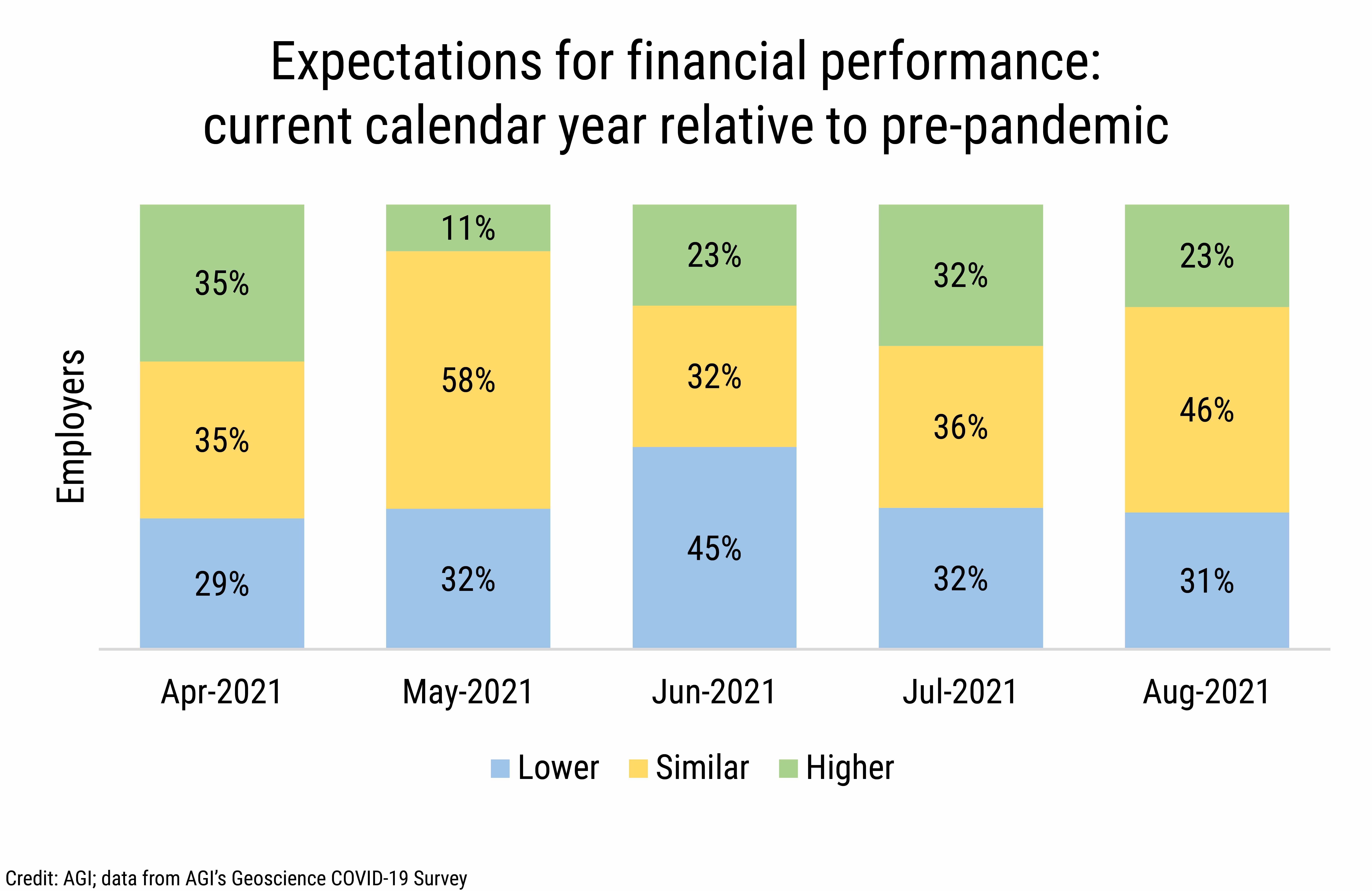
DB_2021-029 chart 02: Expectations for financial performance: current calendar year relative to pre-pandemic (Credit: AGI; data from AGI's Geoscience COVID-19 Survey)
AGI
With the exception of March, July, and August 2021, less than
one-quarter of employers reported receiving financial assistance in
2021. Federal assistance comprised the majority of aid received,
followed by state and local aid, and then investment by business owners
into their companies.
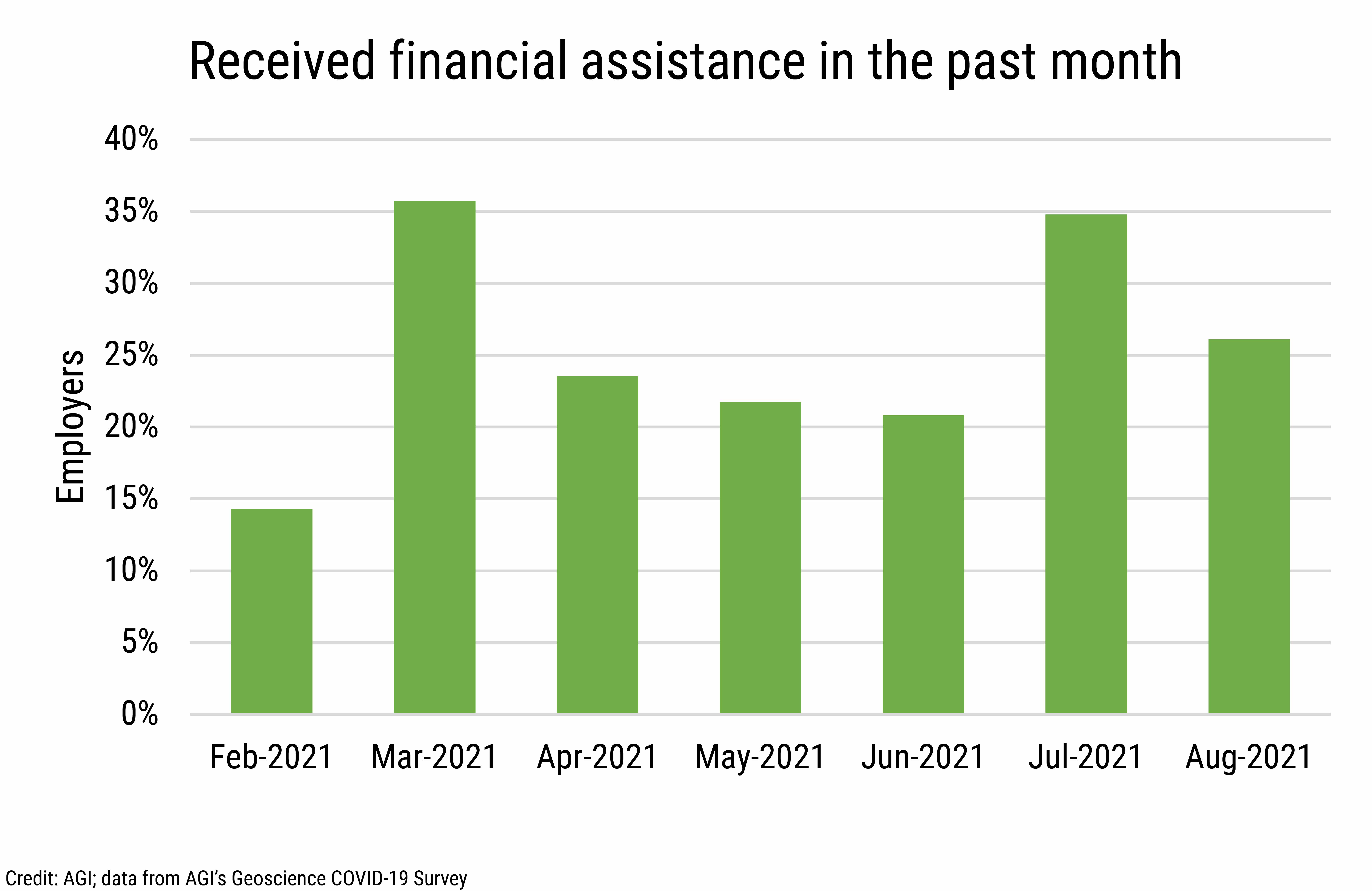
DB_2021-029 chart 03: Received financial assistance in the past month (Credit: AGI; data from AGI's Geoscience COVID-19 Survey)
AGI
Productivity
Since February 2021, just less than half of employers reported increased
workloads relative to staffing, which is an increase over 2020
productivity reporting. In May and August 2021, about 18% of employers
reported excess staffing capacity relative to workload, which was the
lowest since June 2020.
Through 2021, employers have increasingly reported no impacts on
business operations. The number of employers reporting termination or
amendment to revenue-generating contracts has declined, as has
regulatory restriction of access to facilities over the course of 2021.
Supply chain disruptions continued to impact over one-quarter to
one-third of employers through July 2021, but in August, this percentage
had declined to 15%.
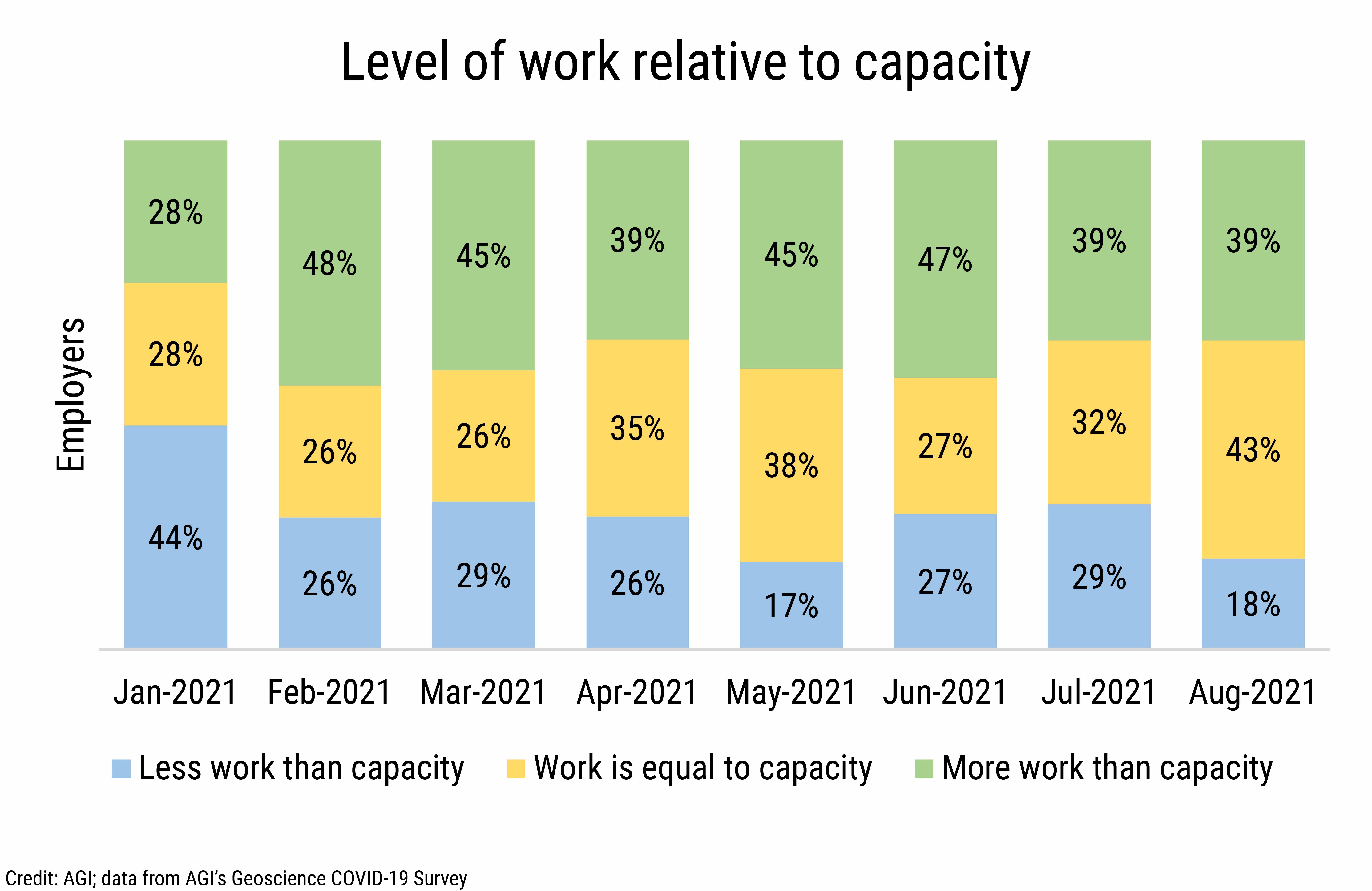
DB_2021-029 chart 04: Level of work relative to capacity (Credit: AGI; data from AGI's Geoscience COVID-19 Survey)
AGI
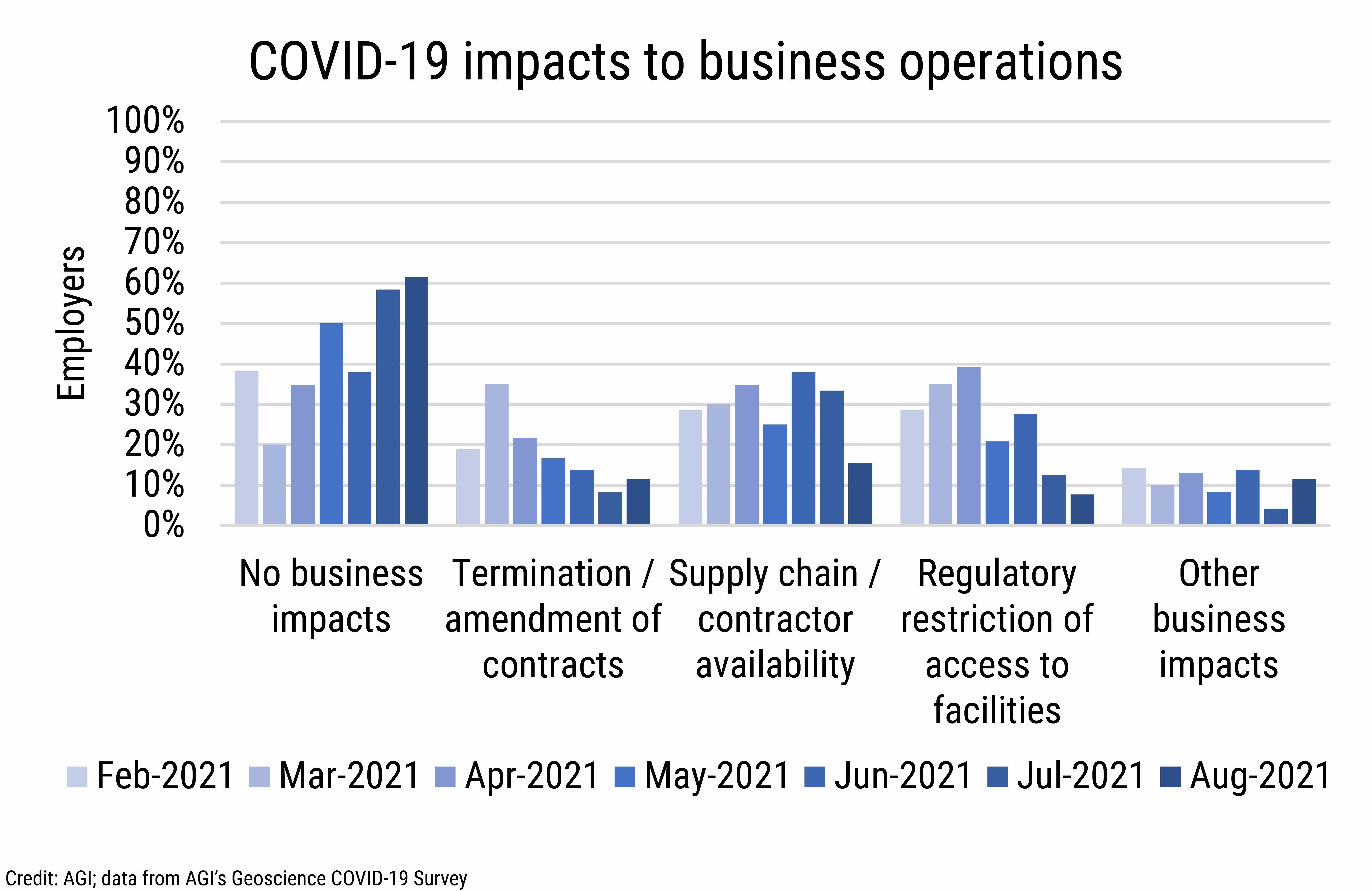
DB_2021-029 chart 05: COVID-19 impacts to business operations (Credit: AGI; data from AGI's Geoscience COVID-19 Survey)
AGI
Strategies, Concerns, and Opportunities
Geoscience employers continued to deal with COVID-19 impacts in 2021
predominantly by investing in remote work resources followed by
implementation of health and safety protocols for those working in
facilities, offices, and at field sites. COVID vaccines, which were not
required by all employers responding to the survey, were listed as a
strategy by 18% of employers. Other strategies used by employers
included increased automation of operations to improve business
operation efficiencies, plans for permanent telework policies to reduce
operational costs and increase employee retention, re-prioritizing
workloads to maintain operations and production capacity, and reducing
overhead expenses where possible.
Employers commented on the benefits of virtual technology platforms in
reducing travel costs, increasing communication with clients both
domestic and international, and the efficiency platforms provide for
meetings and continuing education. Employers also mentioned issues
related to increased workloads to ensure efficient communication when
using virtual technologies. They also mentioned that there has been a
break-down in synergy from the lack of in-person communication, which
has been a common challenge among employers, academic departments, and
individuals throughout the pandemic. Some employers commented on the
impact to infrastructure which is not getting regular maintenance since
staff have not been regularly in the office.
The most reported pandemic-related employer concern continues to be
workplace safety, with one-third of employers reporting this as a major
concern in August 2021. The percentage of employers reporting other
concerns driven moderately to extremely by the pandemic has declined
since January 2021, except regulations related to business operations,
which has increased. In addition, concerns over supply chain disruptions
peaked in May 2021, with just over one-third of employers reporting this
concern. All categories of concerns are down relative to December 2020
except for regulations related to business operations.
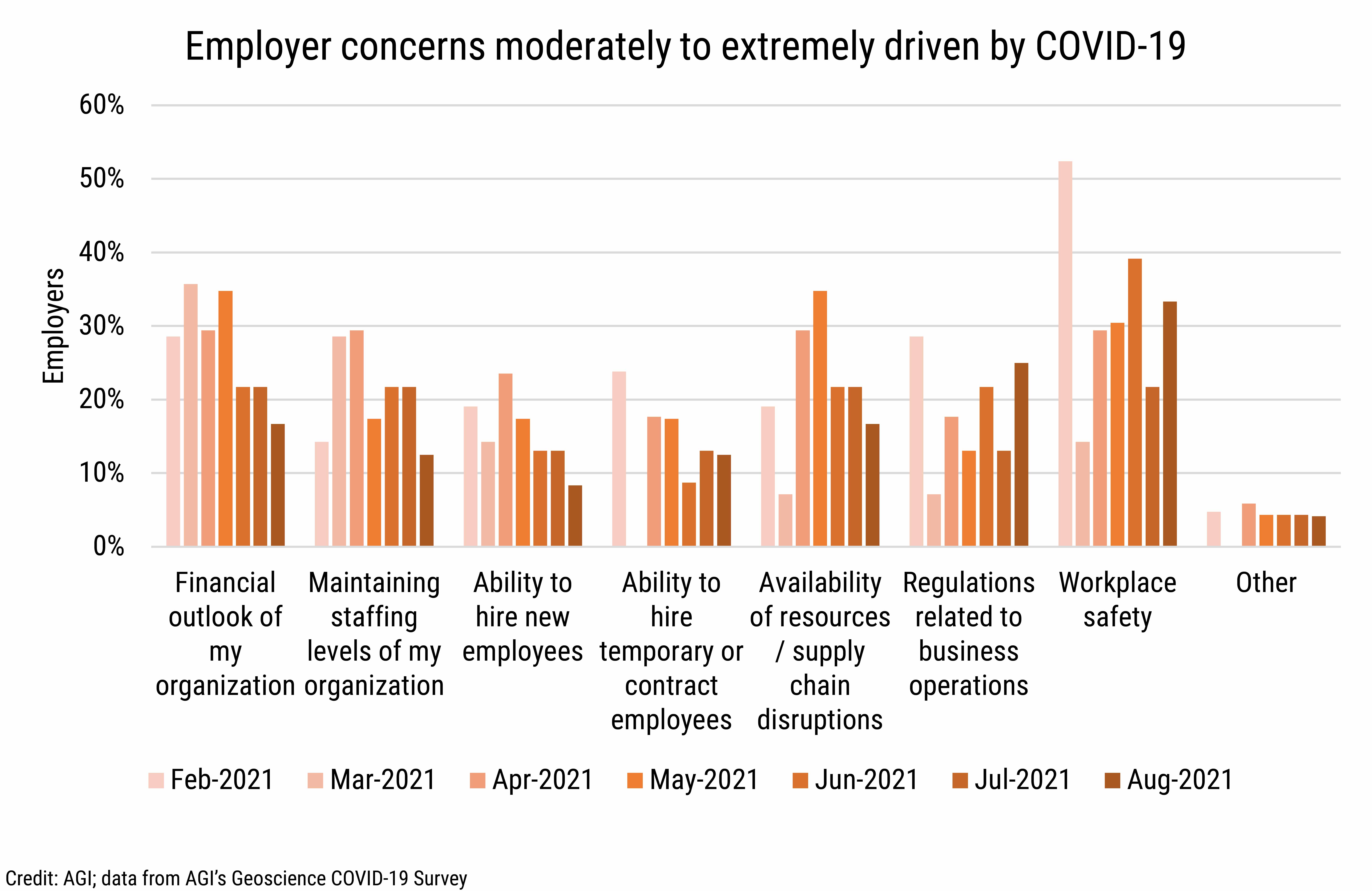
DB_2021-029 chart 06: Employer concerns moderately to extremely driven by COVID-19 (Credit: AGI; data from AGI's Geoscience COVID-19 Survey)
AGI
We will continue to provide current snapshots on the impacts of COVID-19
on the geoscience enterprise throughout the year. For more information,
and to participate in the study, please visit:
www.americangeosciences.org/workforce/covid19
Funding for this project is provided by the National Science Foundation
(Award #2029570). The results and interpretation of the survey are the
views of the American Geosciences Institute and not those of the
National Science Foundation.